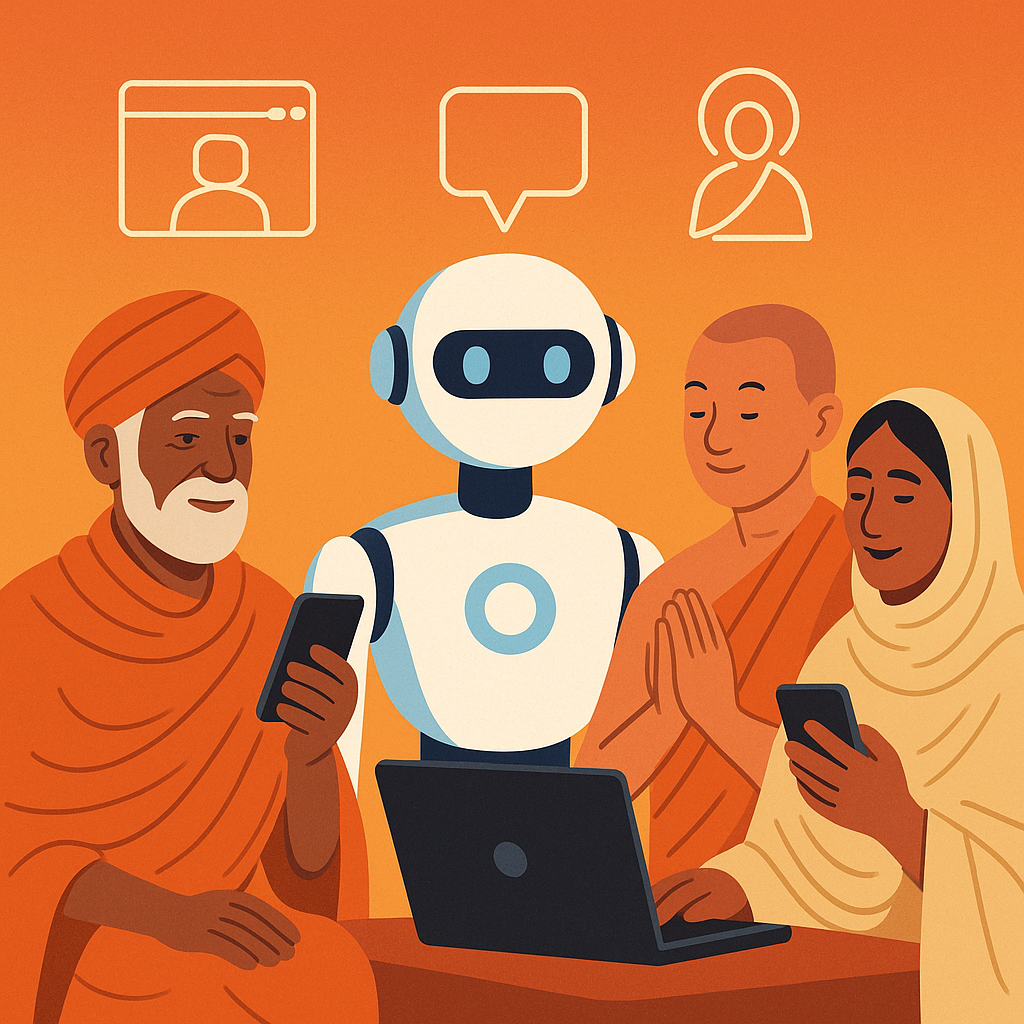Spiritual Leaders & AI: Using Chatbots, Virtual Darshan and More for Outreach
In an age where technology touches nearly every part of life, spiritual communities are increasingly embracing the digital realm. Leading spiritual teachers and faith organisations now view artificial intelligence, virtual platforms, and chatbots as powerful tools for outreach, engagement and deeper connection. Rather than replacing the traditional guru-disciple or temple devotee relationship, they are using these technologies to amplify access, personalise guidance and bring the sacred into everyday digital lives.
Embracing Digital Spirituality
Spiritual leaders recognise that the way people seek meaning, ask questions and engage with faith is shifting. Where devotees once needed to travel long distances to meet a teacher or attend a physical gathering, many now turn to their phones for answers, inspiration and community. Here, AI chatbots trained on sacred texts, virtual-darshan services that stream rituals online, and interactive devotional apps become vital bridging tools. These tools help spiritual teachers reach people who may never step into a shrine, yet yearn for connection, guidance or solace.
Chatbots as Companions in Faith
One of the most visible changes is the rise of conversational AI chatbots that interact with users on spiritual themes. Devotees can ask questions late at night, receive scripture-based responses, or explore rituals and meaning without scheduling an appointment. For spiritual organisations, chatbots provide 24/7 access, multilingual support, and the capacity to handle routine queries — freeing up leaders to focus on deeper teachings or one-on-one guidance. In this model, the chatbot doesn’t replace the human teacher, but serves as first-line support, redirecting deeper matters to the spiritual leader when needed.
Virtual Darshan and the Digital Temple Experience
Beyond text chatbots, the idea of “darshan” (seeing or being seen by the divine) is being reimagined for the digital age. Virtual darshan services allow devotees to stream live rituals, take part in guided meditations, or even symbolically participate in sacred baths through their devices. For people who are geographically distant, differently-abled, or housebound, this opens spiritual access like never before. For communities, it means expanding the circle of participation beyond those physically present in the shrine.
Personalising the Spiritual Journey
AI and digital platforms allow for personalised spiritual journeys. Based on user questions, habits, or emotional state, these systems can suggest specific teachings, meditations or devotional practices. For example, someone facing anxiety might be guided to a relevant scripture passage, a short meditation video or a chat with a human teacher. For spiritual organisations, this means meeting people where they are, rather than expecting everyone to come to a standard class or sermon. The effect is a more responsive, individual-centred spiritual outreach.
Scaling Outreach Without Losing Authenticity
Spiritual leaders have long faced the challenge of scaling their outreach while preserving authenticity, depth and personal connection. AI and virtual tools help achieve this scale: they can engage thousands of people simultaneously, provide language-diverse interactions, and connect disparate communities. But the real art lies in ensuring these tools don’t feel cold or mechanistic. That means embedding human-centric values, maintaining the teacher’s voice, and making sure that digital tools reinforce rather than supplant the relational core of spiritual guidance.
Ethical Considerations and Challenges
With great power comes responsibility. Using AI in spiritual practice raises ethical questions: How accurate are the responses? Are scripts or chatbots interpreting sacred texts appropriately? Could digital access dilute the value of physical presence or the teacher-disciple relationship? Leaders must guard against mechanising the spiritual journey or neglecting human empathy. Data privacy, algorithmic bias, and the risk of oversimplifying rich traditions are real concerns. Addressing these requires transparency, oversight and ongoing dialogue between technologists and spiritual custodians.
Building Community and Engagement Online
Digital platforms also offer vibrant community-building opportunities. Live-streamed satsangs (spiritual gatherings), chat-rooms for devotional discussion, peer-to-peer mentoring networks and virtual retreats are now possible at global scale. AI-enabled tools help moderate discussions, personalise notifications and help newcomers feel welcome. For spiritual leaders, this means extending their community beyond geographical boundaries and empowering members to connect, support and learn from each other in meaningful ways.
The Future of Spiritual Tech
Looking ahead, the marriage of technology and faith promises further innovation: immersive virtual reality temples, augmented-reality pilgrimage experiences, AI-guided personal retreats, and analytics that help spiritual organisations better understand how people engage with faith. But the core mission remains the same: bringing people to their highest selves, helping them find meaning, purpose and inner peace. Technology is the tool; the sacred remains the substance. In summary, spiritual leaders are no longer confined to pulpits, ashrams or temples alone. By embracing chatbots, virtual darshan and personalized AI-driven outreach, they extend their teachings and community far beyond physical boundaries. The key lies not simply in adopting technology, but in doing so thoughtfully — retaining the warmth, depth and relational essence of spiritual guidance. When done well, “faith & AI” becomes not a replacement of tradition, but a new window into it — inviting every seeker, in every time zone, to step into the sacred.
~Religion World Bureau









